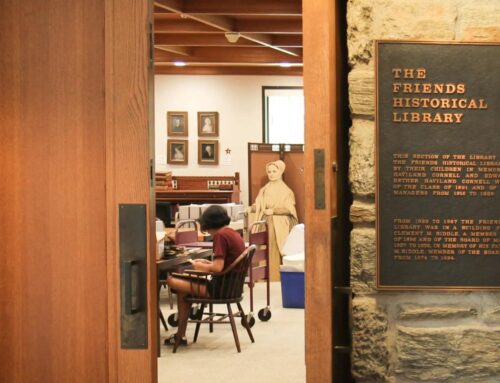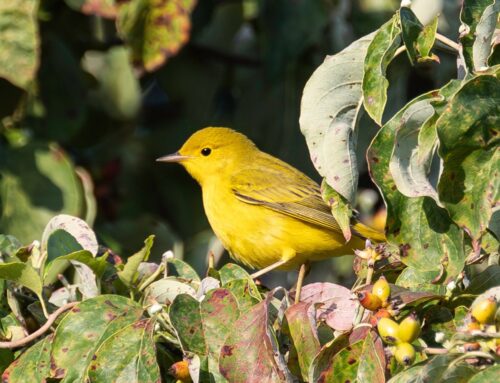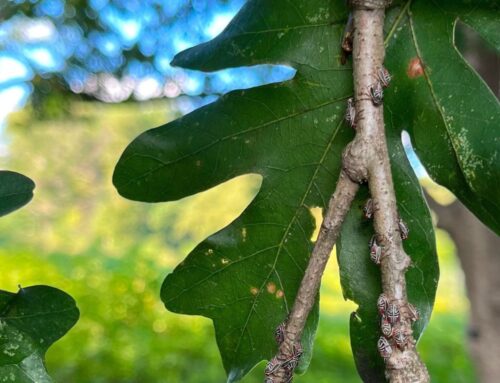At this writing – November 29, 2023 – we have already had a dusting of snow and today’s low temperature was 23 degrees and the high will only be 35 degrees.
When I walk at Tyler on a day like today, I wonder, and worry about, how the animals are going to make it through this winter. One way, I handle worry is to be curious because when I rely on information, my worries can sometimes be put to bed (hibernation joke).
We live in warm houses, and we wear heavy coats. Our food comes from the grocery store. Animals have the same needs as us: warmth and protection from the cold, and food to sustain them till they can feast in the abundance that is spring.
So, how do animals obtain warmth, protection, and food? The answer is simple: migrate, adapt, hoard, find shelter, hibernate, diapause or dormancy. Yet, none of these ways are easy.
Migrate
When it comes to some animals, they travel to other places where the weather is warmer or they can find food.
Some of the birds we see at Tyler leave us in the fall and return to us at springtime. Some of our birds fly in a group and others fly solo. Wondered how they know when to leave? Migration is part of a yearly cycle of changes a bird goes through. The cycle is controlled by changes in the amount of daylight and the weather.
Whether the flight be long or short, birds return to the same spot each year. How? Just like sailors once did, using the sun, moon and stars for direction.
They also seem to have a compass in their brain for using the Earth’s magnetic field. No GPS or Waze needed!
Mammals migrate too, such as Tyler’s hoary bats. They fly south in the fall and fly north to return to Tyler in the spring.
Some insects also migrate. Butterflies and moths who fly very long distances. Tyler’s monarch butterflies spend the summer with us and fly south to Mexico for the winter. Termites and Japanese beetles, and bumblebees move downward into the soil. Earthworms to do the same, sometimes going as far as six feet below the surface.
There is a bit of sadness for me when some of the animals at Tyler leave us for a while. Yet, we need not remain sad, because they will either fly back to us or come to the surface each spring.
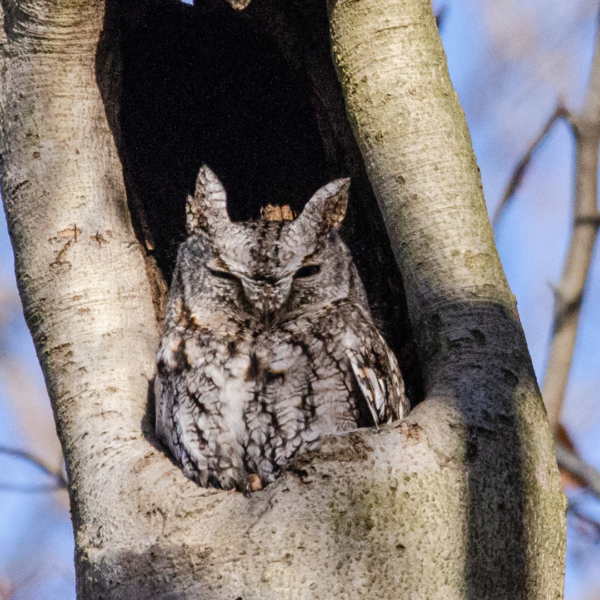
Settling in for the winter.
Hibernate
Some animals hibernate for part or all of the winter. Hibernation is a special, very deep sleep. The animal’s body temperature drops, and its heartbeat and breathing slow down. Thus, using very little energy.
In the fall, hibernating animals get ready for winter by accumulating body fat. They use this fat for energy while hibernating. Who’s getting fatter and sleeping on the job, bears, skunks, and chipmunks, me too after a long, cold winter. The eastern red bats falls asleep in leaf litter or snow till the temperature rises and they once again can be seen flying in the sky.
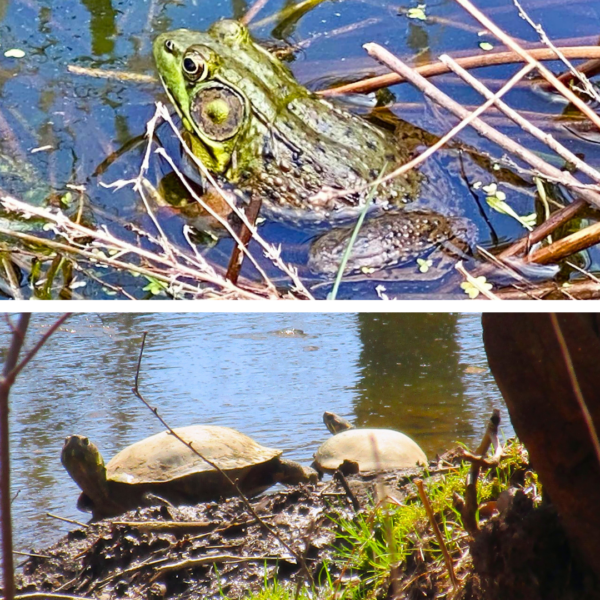
The pond will provide shelter for many creatures in the winter.
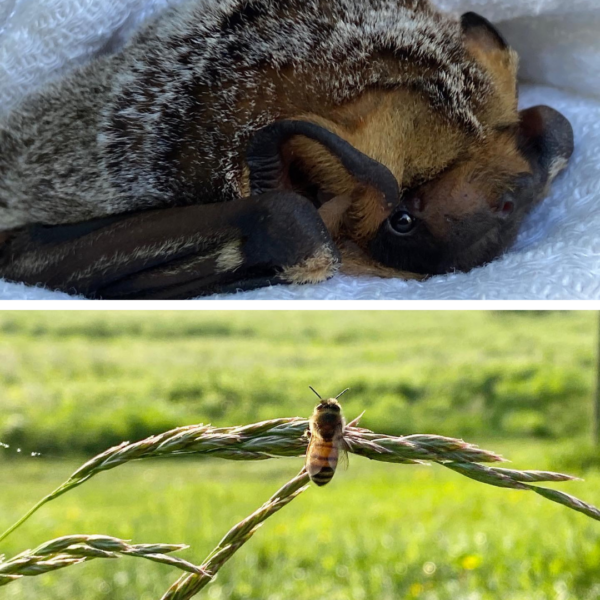
Familiar sights around Tyler: the hoary bat and honey bee.
Adapt
As we walk the trails at Tyler during the winter, we see some of our animals have chosen to remain and stay active. Many make changes in their behavior and their bodies. To keep warm, animals may grow newer, thicker fur in the fall. Foxes grow thicker fur on both their bodies and their tails. They wrap their tails around themselves when sleeping as a defense layer against cold and snow, which helps to keep them warm. They even have a counter-current heat mechanism in their paws, meaning their feet stay at a lower temperature then the rest of their bodies to help prevent too much heat from escaping via contact with the cold and icy ground.
Food is hard to find in the winter. Some animals like squirrels, mice, and honeybees gather extra food in the fall and store it eat later. Others like rabbits, and deer, spend winter looking for moss twigs, barks, and leaves to eat. Tyler’s red foxes eat fruit and insects in the spring, summer, and fall. In winter, they cannot find these things, so instead they eat rabbits, squirrels, mice, and voles.
With their supersonic hearing and exceptional sense of smell, foxes can trace prey in the winter irrespective of inclement weather. In fact, foxes can trace the scent of a mouse or vole over the length of a football field, which is a trait they need to have for their survival. What can I say, it’s a circle of life thing!
When it comes finding winter shelter some of the animals at Tyler shelter in holes in trees and logs, under rocks and leaves, or underground. Some animals like squirrels and honeybees huddle close together to try and stay warm.
Other Ways to Survive
Cold blooded animals like fish, frogs, turtles in Tyler’s Pond, and the snakes in our meadows and forests have no way to keep warm during the winter. Snakes and other reptiles find shelter in holes and burrows and spend the winter inactive or dormant like hibernation. Frogs, fish, and turtles hide under rocks, logs or fallen leaves or mud in the pond. Cold water holds more oxygen than warm water. Frogs and turtles, breath by absorbing this oxygen through their skin.
Insects look for winter shelter in holes in the ground, under the barks of trees, and deep inside rotting logs or in any small crack they can find.
One of the most interesting places insects overwinter is in a gall, the place where a plant swells, caused by certain insects, fungi or bacteria which make a chemical affecting the plant’s growth in a small area, forming a lump. The gall then becomes a home and a food source.
Many insects at Tyler spend the winter dormant, or in the “diapause.” Diapause is similar to hibernation. It is a time when growth and development stop.
During this time, the insect’s heartbeat slows, and breathing and temperature drops. Animals like hummingbirds and little brown bats become dormant for part of the day.
Some insects spend the winter as worm-like larvae. Others spend the winter as pupae. Other insects die after laying the eggs in the fall. The eggs hatch into new insects in the spring and everything begins all over again.
Interested in learning more about what insects and bees do in the winter? Check out these resources:
Come Explore the Grounds This Winter
The truth about winter at Tyler Aboretum is this – when it comes to the animals there’s a lot going on you cannot see, and when it comes to humans, you’ll have the place almost to yourself. Come to Tyler, this winter. Keep your eye out for the animals who are with us for the cold months. Enjoy the peace and quiet while walking in our woods, meadows, and to the pond. I plan to be there, hope you will too.



